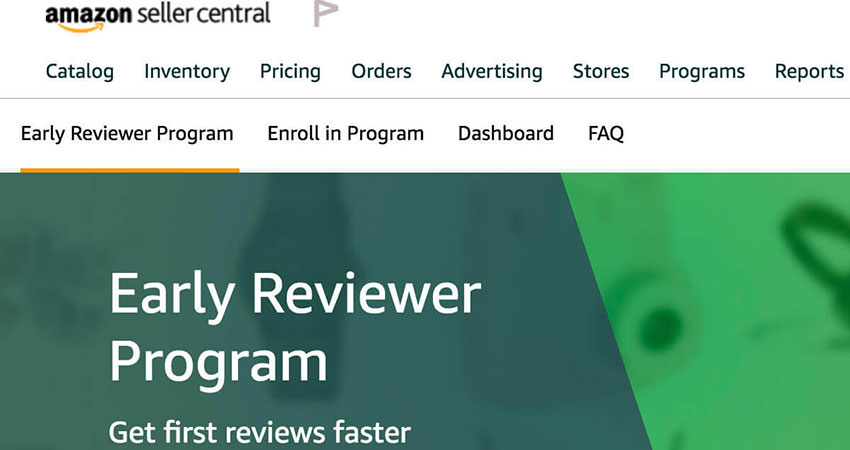Amazon announced it plans to cancel its Early Reviewer program as of April 25, and won’t be taking any new applications as of April 10, as it has found other programs more effective in generating customer reviews, upsetting sellers who had found success with it.
Early Reviewer, first introduced in 2017, charged sellers $60 to have Amazon send out free product samples to reviews it hand picks, in order to solicit up to five reviews. They are further incentivized to leave a review by being rewarded with a gift card, typically valued at $1-$3.
“We know that product reviews are important to customers and selling partners, and we are retiring the Early Reviewer Program because other features, such as One Tap Reviews and review requests on the Amazon homepage have been more effective at encouraging customers to leave a review,” an Amazon spokesperson said. “Amazon is always innovating and this allows our teams to continue to build features that will delight more customers and sellers.”
Amazon will continue to requests reviews on behalf of sellers, who can also ask customers to leave a review through the Buyer-Seller messaging tool.
While some experts said their customers won’t particularly miss Early Reviewer, and that Amazon Vine is far superior, comments on Seller Central were running against Amazon’s decision. Early Reviewer was only available in the U.S., the UK, Japan and India.
One seller speculated that Amazon deemed Early Reviewer ran afoul of the Consumer Review Fairness Act of 2016, which prohibits essentially buying positive reviews.
“It’s quite disappointing,” said one seller in a typical comment. “They do make the point that it’s easier to get reviews now, but in the beginning when a product has no reviews, the Early Reviewer Program is extremely useful. There are very few legitimate ways to acquire those first reviews so it’s sad to see they discontinuing one that works well.”
Greg Mercer, CEO of Jungle Scout, said Early Reviewer was Amazon’s response to sellers who complained in 2017 after they were prohibited from offering incentives like free products or discounts to garner reviews, fostering lots of biased, untrustworthy responses.
Under Early Reviewer, the seller had to be the brand owner, and the product had to have less than five reviews to qualify.
“It probably only slightly increased the rate of reviews,” said Mercer. “It’s not like it was the end all, be all or magic bullet. Sometimes it would take months to get to five reviews that Amazon helped to incentivize.”
Mercer said Vine was a much better option for sellers than Early Reviewer. It was opened up to third-party sellers in 2019, after being available to first-party sellers only since its 2007 launch. Vine voices, as participating reviewers are called, are selected by Amazon based on feedback from other customers.
Under Vine, sellers submit products to Amazon, which are then distributed to reviewers. Some participating vendors can enroll before a new product is released to solicit reviews prior to launch.
“Vine is significantly more impactful, and does a better job of getting reviews,” Mercer said. “It’s free now, although Amazon may start charging (sellers). You can give away up to 15 units, which can go pretty quickly, and Amazon selects who it believes are the most honest, unbiased and helpful reviewers. If I give a product to a Vine (voice), pretty much every time they’re going to write a review.”
Becky Trowbridge, a content strategist with eComEngine, said Early Reviewer served a purpose as there were “only so many white-hat methods” of garnering reviews on Amazon, and she would generally recommend that sellers give it a try, especially with a product launch.
“Our customers had mixed success with it,” Trowbridge said. “Some had a real positive experience, while others didn’t see any traction.”
A bigger problem, Trowbridge said, was Amazon’s decision in December to discontinue sellers’ ability to respond to a customer review. This was especially problematic, she said, because sellers can no longer counter false or mistaken information shared in a negative review.
“As a seller, that’s a real issue,” Trowbridge said. “We have a client that has a single seasonal product, and it got a negative review that received hundreds of upvotes, and everyone sees the negative reviews. It turned out to be a user error, not the product, and they had no way to dispute it.”
More and more, she said, reviews can say the wrong things, which in some cases can create liability issues for the brand. “If you sell a space heater, and someone said they put a blanket on top of it and it started a fire, there’s no way for them to say, that’s a bad idea,” Trowbridge said.

